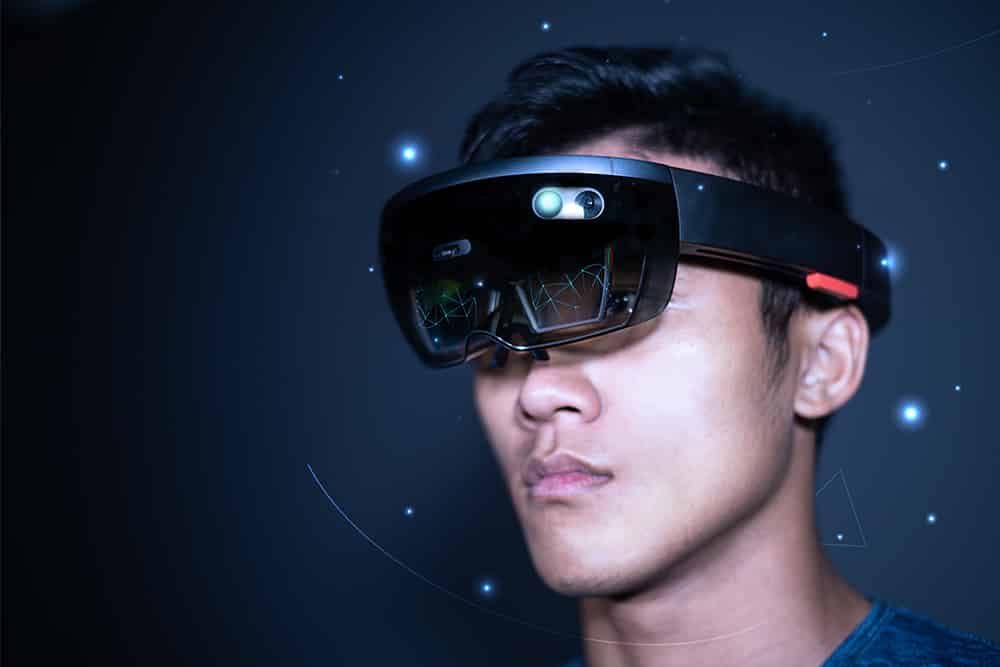The essence of technology, in all its aspects, focuses on the development of products to meet people’s needs.
There are various ways in which technology has transformed human life. These examples range from e-commerce to social networks, where the necessary technology already existed long before the boom in these practices.
However, using technology or Augmented Reality in eLearning is relatively new, but it has immense potential. With the falling costs of using AR and VR technology, businesses and employees can exploit this potential significantly.
E-learning is one of the techniques that are most contributing to the Digital Transformation of organizations. The advantages of training modality to improve the professional skills of their employees are already known.
E-learning techniques have become elements of digital transformation. It also helps them to adapt to technological advances. Moreover, when you use Augmented Reality in E-learning, it can enrich the learning experience and also make it more interesting for the learners. They can retain much more through such methods than the regular and boring training programs.
Let’s check out some of the advantages of using Augmented Reality in eLearning!
1) Training in Hazardous Situation
When it comes to training your employees in strenuous or challenging situations, Augmented Reality can be of great help. It gives people an avenue to interact safely with hazardous objects.
Dangerous scenarios can be created with the help of AR, and trainees can learn to deal with them while avoiding negative consequences. It offers a perfect platform for the application of theoretical knowledge in a virtual and relatively safe environment.
It is much safer to make mistakes in such environments and learn from them. Using Augmented Reality in eLearning comes handy for stressful situations of jobs, and students can learn the right steps or approach without endangering their lives or the lives of others involved.
For example, if there is a training program for police officers, they can learn to deal with robbers or safely rescue hostages without putting anyone’s life in danger. Similar, it can be beneficial for pilots to help them avoid a plane crash and many other professions.
2) Compliance Training
Compliance training can be made more interesting with the help of Augmented Reality. Some compliance training programs can be distinguished from the perspective of the company but can be boring for the employees if it is not directly related to them.
For example, if an employee has a front desk job in a company that produces chemical wastes, they must learn about waste separation.
However, it might not be something that they would do every day. In such a scenario, having training or eLearning programs using Virtual Reality can offer them practical knowledge in real life-like situations.
This way, they can take more interest in learning while also being safe. Similarly, other types of compliance training that focus on equal treatment of all, avoidance of discrimination at work, and others can help the company have a good reputation in the market.
3) Employee Onboarding
Research shows that employee onboarding has a direct impact on job satisfaction and retention. However, many employers complain that employees lack the motivation to take up relevant courses that are crucial for them to perform well in the company.
Some of the common reasons given by employees are that these courses are not engaging enough, and they don’t feel the need to do them. In such a scenario, using AR for employee onboarding can revolutionize the whole process.
It can allow new employees to take a virtual tour of their new company and also see how each department functions. It can also help them develop good relationships with other departments and can work in coherence with them. It also brings the human component, and employees can interact with others in a natural environment, increasing their overall job satisfaction.
In some industries, where employees are directly in charge of dealing with clients, they can do so without losing potential clients by having a better understanding of their company policies and relationship with the company.
4) Product Training
Product training can become much better with the help of Augmented Reality. First of all, employees can learn more about the product in real-time and can experiment with it without really damaging the product.
Secondly, if the product is very expensive or delicate, they don’t have to worry about damaging it. They can play around with it and understand it better.
Augmented Reality can make the entire training process with new products more profound and interactive. In addition to that, in cases where employees have to work directly with a new product, AR can offer them an environment to try them out in a safe environment.
For example, if there is a new truck, the employees can learn to operate it in a virtual environment with a trained operator without risking anything.
5) Soft skills Training
Soft skills are critical for every employee to ensure the success of a business. When you use AR for soft skills training, you offer a real-time environment with computer-based programs that give verbal feedback, gesture, gaze, and uses body postures as well as a real person.
This helps the learners get the right skills in a more realistic environment. With such behavioral learning models, people can learn in a more interactive environment. It gives a broader opportunity to have more practical experience.
Also, learners can repeat and practice their skills to gain more confidence. It can work correctly for communication skills, public speaking, negotiation skills, and much more.
All this helps in gaining confidence in applying the newly acquired soft skills in the real world.
Final Words
Technologies such as Augmented Reality and Virtual Reality, gamification, applications, virtual tours, Internet of Things (IoT), or social network can be used as learning resources with better results than the primitive ones.
However, it is currently not common to find e-learning products that are used widely. They still require more promotion. In conclusion, AR in e-learning requires a Digital Transformation that increases its potential and also the potential of the employees and an organization to learn. It can act as an engine of competitiveness in organizations.
Check out the Learning Management System built by WBPRO.




